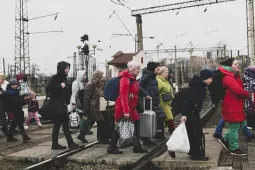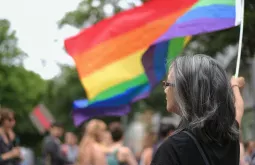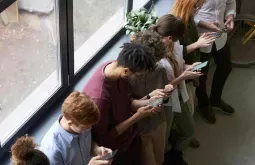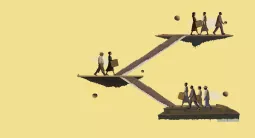Cartagena, sodden mess of life
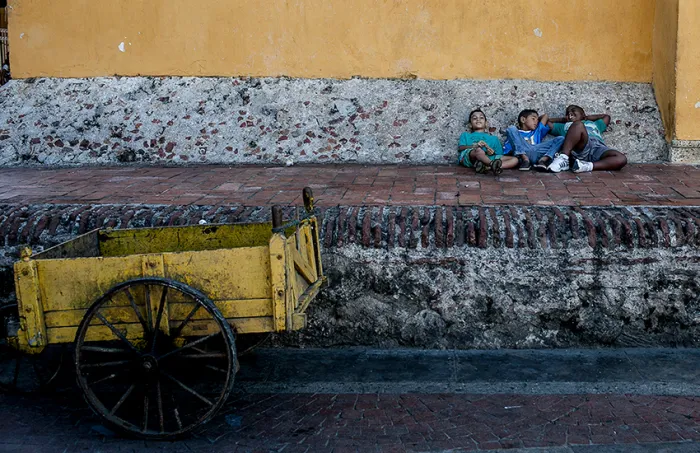
Immortalized by Gabriel Garcia Marquez, the heroic Cartagena is translated into a less fantastic reality beyond the walls that enclose the city. A few meters from postcard stripped scenario is Pedro Blas Julio Romero who runs at will as the authority of the letters. Responsible for portraying verses violence of the guerrillas and the Colombian army, the 67 year old poet is also one of the main activists to denounce the flagrant gentrification process in Getsemaní, historic district that he describes as a place «castrated of sun»
Born and raised in the neighborhood, Blas turned his neighbors, friends and youth passions characters of his books as a way to enhance the identity of Getsemaní, an enclave of black resistance, the scene of the first battle for independence during the colonial period. Today, the poet denounces a new «territorial conquest» by foreigners, eager to transform the secular mansions in bars, restaurants and hotels allegedly hipsters. «Culture is a way of bringing back the streets the cartagenero, this citizen excluded from their own city.»
Winner of the National Poetry Prize in 1993, Blas lived most of the time in the region before traveling the world for 26 years as a sailor. The period under military rigidity inspired his first book, Letters from an Unknown Soldier (1971), which reported violations institutionalized by the state and naturalized by Colombian society. In his travels, he was in Salvador and Cachoeira, recognized as sister cities of Cartagena and that touch the poet by the similarity of » solemn disorder soaked of life.»
Cartagena and waterfall are declared sister cities, which the similarities?
I was in Bahia, in Cachoeira, five years ago. There is something very similar to that takes enslaved occurred while the port of Mozambique, which at that time was in the hands of Belgian colonialism and called Zanzibar. Simultaneously, slaves cammed to Cachoeira and Cartagena and there isn’t much difference between the independence of Waterfall in July, and Cartagena in November. When I was there, I was watching the drums in a very similar court to the Holy Trinity, I fell tears in my eyes to notice this as a real manifestation of brotherhood.
What caused Cartagena to become a reference in gentrification processes?
As in all of Colombia, the cartageneros have an ‘hispanity’ crisis. They wanted to be Spanish, felt bourbons with blue eyes, even if Spain repudiated then. In the sixteenth century, they banned the entry of foreigners who did not have Spanish blood. They did not want the black people to close. Today, there is a sinister plan, the tragedy of dispossession, where the native is displaced in a humiliating way to the periphery. First, they vacated the historic center, which is now a tomb, a mausoleum. There are five star hotels, restaurants, casinos. But there isn’t a the cartagenero. This happened in Chambacú, San Diego and now in Getsemaní.
These removals have occurred at different times. What are the similarities?
Chambacú was a black neighborhood, which was dislodged in a Prussian way. In a morning, the trucks arrived and put all out. Today in Gethsemaní, the dislodgement happens in the American way, by taxes. In both cases, the official bureaucracy prevents the residence of citizens in their territory. They created a unique urban area, an increase of taxes, electricity bills, gas, water. Are high tariffs that we can not afford. Desperate people sell houses. It is a battle that we lost.
What makes Getsemaní a symbol of that process?
Black families lived here since the construction of the walls, in wooden shacks that still exist. Here we met the people said degenerate and here began the liberation of Cartagena, because this community has established itself as a bastion of resistance, like the festive blocks of the sixteenth century, the very essence of africanism. It was a neighborhood of great celebration, a multicolored party where there was music that cheered everyone, with children dancing in the streets. I grew up on these streets, I saw this party in childhood, but today it is lost. Today, here it is where the gringos come to get drunk.
What are the impacts of this process on the identity of the population of Cartagena?
The conquest of territory establishes a mandatory order to respect not who one looks like similar, but the other one, the foreign, the white. They finished convincing blacks that they are smaller, less than the whites. But the African essence is alive since time immemorial. Even with the violence of the conquest, these references and symbols remain, although asleep, oppressed amidst the shifting process. There comes a time when one can no longer live with this weight.
What is the place of black people in Cartagena today?
Cartagena is one of the toughest cities for black guys. We are an attraction for the official tour. The black is seen as an exotic postcard that dances, as an attractive animal. But there’s not a presence of respect, here, with the black body. He is not in the power spheres. We continue living with the racism of the past century, when people forbade all parties and poetry of black people. I speak of racism in my writings, but here it is disguised. People say it is a lie, still looking down and subduing black culture, separating the hypocrisy ever.
How this process affects the cultural movement?
Every proposal that is out of this exotic design, is destroyed by the masters of the officers, whom interested people to sell their homes. It is one of those provincial antipathies of those who wanted to be bourbons. In 1930, the poet Jorge Artel, who was born in the neighborhood, was forbidden to write black themes in the newspapers. Even today, every time there is a manifestation of black culture, feudal sectors try to constrain it, like the poetry festival me and a group organize. We also rescued the tradition of black cabildos of the sixteenth century, coming out in the neighborhood during Carnival in November, devoted to the orishas. WE wanted to recall the authentic cartagenera party, different from the official, elitist one. We were criticized.
What is the meaning of the word resistance with these segregation processes?
When I open my eyes, I go out home, I see black guys embarrassed, dejected. Before, we had here black guys very proud, not submissive, like Jorge Artel. But he is not known by the young generation. So we founded the cabildo and the comnuity forum to stop the threat against the neighborhood. Resistance occurs by the culture, to bring back to the street cartagenero, this citizen deleted from his own city. It is undeniable that countries where there are opportunities to confront racism, talk about it, it allows the blacks to overcome oppression. Here, it is silenced, we close the door, point weapons.
In the book Letters of an Unknown Soldier (1971) he said that the country was building a generation ‘drowned in hatred’, due to violations during the conflict. What has changed?
We have not change anything. The basis of this state is the genocide, that we still live today. The most victimized sectors were black, since the proposal of paramilitary settlements throughout the colombian caribbean coast was to erase from the territory all black presence. It’s the same racist deployment from before the colony, during the colony itself and now, in the republic. IT’s been more than 200 years of state neglect, because there is no state. There is a corrupt government, based on the plundering of public property and persecution of blacks and indigenous people to deny then any space.
How do you see the peace process with the FARC?
The peace agreement is like a circus. The political oligarchy always seeks a pretext, a showcase to get more votes and continue on the power. If there is not respect and consideration for the people, an education and health program, the war will continue. It can finish the FARC, but we still have ELN, gangs and drug dealers. Colombia has not an equitable platform for its people, than the referendum is more a political ruse of a strange time. It is also mediatic. The press leads people to fundamentalism, to take sides by yes or no and then kill each other in disagreement.



